TLV320AIC3104IRHBR Audio Codec: Pinout, Datasheet, and Alternatives
32 Termination 0.5mm CODEC TLV320AIC3104 1.8V 32-VFQFN Exposed Pad









32 Termination 0.5mm CODEC TLV320AIC3104 1.8V 32-VFQFN Exposed Pad
The TLV320AIC3104IRHBR is a highly flexible, low-power, stereo audio codec with extensive feature integration, intended for applications in smartphones, PDAs, and portable computing, communication, and entertainment. This passage will cover its description, datasheet, pinout, and other ways.
- TLV320AIC3104IRHBR Description
- TLV320AIC3104IRHBR CAD Models
- Specifications
- TLV320AIC3104IRHBR Features
- TLV320AIC3104IRHBR Applications
- TLV320AIC3104IRHBR Manufacturer
- TLV320AIC3104IRHBR Recommended Operating Conditions
- TLV320AIC3104IRHBR Pins and Pins Functions
- TLV320AIC3104IRHBR Dimensions
- TLV320AIC3104IRHBR Package
- TLV320AIC3104IRHBR Alternatives
- Trend Analysis
- Datasheet PDF
- Parts with Similar Specs
TLV320AIC3104IRHBR Description
The TLV320AIC3104IRHBR is a low-power stereo audio codec that includes a stereo headphone amplifier, as well as various single-ended and completely differential inputs and outputs. It features extensive register-based power regulation, allowing stereo 48 -kHz DAC playback with as little as 14 mW from a 3.3 -V analog source, making it perfect for battery-powered audio and telephony applications.
TLV320AIC3104IRHBR CAD Models
Symbol
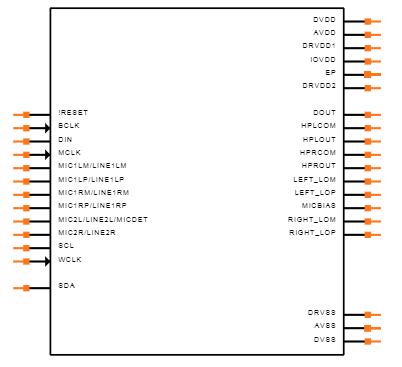
Footprint

3D Models
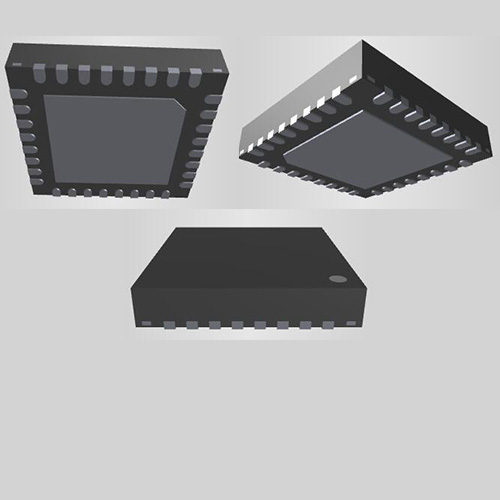
Specifications
- TypeParameter
- Factory Lead Time6 Weeks
- Mounting Type
The "Mounting Type" in electronic components refers to the method used to attach or connect a component to a circuit board or other substrate, such as through-hole, surface-mount, or panel mount.
Surface Mount - Package / Case
refers to the protective housing that encases an electronic component, providing mechanical support, electrical connections, and thermal management.
32-VFQFN Exposed Pad - Surface Mount
having leads that are designed to be soldered on the side of a circuit board that the body of the component is mounted on.
YES - Operating Temperature
The operating temperature is the range of ambient temperature within which a power supply, or any other electrical equipment, operate in. This ranges from a minimum operating temperature, to a peak or maximum operating temperature, outside which, the power supply may fail.
-40°C~85°C - Packaging
Semiconductor package is a carrier / shell used to contain and cover one or more semiconductor components or integrated circuits. The material of the shell can be metal, plastic, glass or ceramic.
Tape & Reel (TR) - JESD-609 Code
The "JESD-609 Code" in electronic components refers to a standardized marking code that indicates the lead-free solder composition and finish of electronic components for compliance with environmental regulations.
e4 - Pbfree Code
The "Pbfree Code" parameter in electronic components refers to the code or marking used to indicate that the component is lead-free. Lead (Pb) is a toxic substance that has been widely used in electronic components for many years, but due to environmental concerns, there has been a shift towards lead-free alternatives. The Pbfree Code helps manufacturers and users easily identify components that do not contain lead, ensuring compliance with regulations and promoting environmentally friendly practices. It is important to pay attention to the Pbfree Code when selecting electronic components to ensure they meet the necessary requirements for lead-free applications.
yes - Part Status
Parts can have many statuses as they progress through the configuration, analysis, review, and approval stages.
Active - Moisture Sensitivity Level (MSL)
Moisture Sensitivity Level (MSL) is a standardized rating that indicates the susceptibility of electronic components, particularly semiconductors, to moisture-induced damage during storage and the soldering process, defining the allowable exposure time to ambient conditions before they require special handling or baking to prevent failures
2 (1 Year) - Number of Terminations32
- ECCN Code
An ECCN (Export Control Classification Number) is an alphanumeric code used by the U.S. Bureau of Industry and Security to identify and categorize electronic components and other dual-use items that may require an export license based on their technical characteristics and potential for military use.
EAR99 - TypeStereo Audio
- Terminal Finish
Terminal Finish refers to the surface treatment applied to the terminals or leads of electronic components to enhance their performance and longevity. It can improve solderability, corrosion resistance, and overall reliability of the connection in electronic assemblies. Common finishes include nickel, gold, and tin, each possessing distinct properties suitable for various applications. The choice of terminal finish can significantly impact the durability and effectiveness of electronic devices.
Nickel/Palladium/Gold (Ni/Pd/Au) - HTS Code
HTS (Harmonized Tariff Schedule) codes are product classification codes between 8-1 digits. The first six digits are an HS code, and the countries of import assign the subsequent digits to provide additional classification. U.S. HTS codes are 1 digits and are administered by the U.S. International Trade Commission.
8542.39.00.01 - Terminal Position
In electronic components, the term "Terminal Position" refers to the physical location of the connection points on the component where external electrical connections can be made. These connection points, known as terminals, are typically used to attach wires, leads, or other components to the main body of the electronic component. The terminal position is important for ensuring proper connectivity and functionality of the component within a circuit. It is often specified in technical datasheets or component specifications to help designers and engineers understand how to properly integrate the component into their circuit designs.
QUAD - Terminal Form
Occurring at or forming the end of a series, succession, or the like; closing; concluding.
NO LEAD - Peak Reflow Temperature (Cel)
Peak Reflow Temperature (Cel) is a parameter that specifies the maximum temperature at which an electronic component can be exposed during the reflow soldering process. Reflow soldering is a common method used to attach electronic components to a circuit board. The Peak Reflow Temperature is crucial because it ensures that the component is not damaged or degraded during the soldering process. Exceeding the specified Peak Reflow Temperature can lead to issues such as component failure, reduced performance, or even permanent damage to the component. It is important for manufacturers and assemblers to adhere to the recommended Peak Reflow Temperature to ensure the reliability and functionality of the electronic components.
260 - Number of Functions1
- Supply Voltage
Supply voltage refers to the electrical potential difference provided to an electronic component or circuit. It is crucial for the proper operation of devices, as it powers their functions and determines performance characteristics. The supply voltage must be within specified limits to ensure reliability and prevent damage to components. Different electronic devices have specific supply voltage requirements, which can vary widely depending on their design and intended application.
1.8V - Terminal Pitch
The center distance from one pole to the next.
0.5mm - Time@Peak Reflow Temperature-Max (s)
Time@Peak Reflow Temperature-Max (s) refers to the maximum duration that an electronic component can be exposed to the peak reflow temperature during the soldering process, which is crucial for ensuring reliable solder joint formation without damaging the component.
NOT SPECIFIED - Base Part Number
The "Base Part Number" (BPN) in electronic components serves a similar purpose to the "Base Product Number." It refers to the primary identifier for a component that captures the essential characteristics shared by a group of similar components. The BPN provides a fundamental way to reference a family or series of components without specifying all the variations and specific details.
TLV320AIC3104 - Pin Count
a count of all of the component leads (or pins)
32 - JESD-30 Code
JESD-30 Code refers to a standardized descriptive designation system established by JEDEC for semiconductor-device packages. This system provides a systematic method for generating designators that convey essential information about the package's physical characteristics, such as size and shape, which aids in component identification and selection. By using JESD-30 codes, manufacturers and engineers can ensure consistency and clarity in the specification of semiconductor packages across various applications and industries.
S-PQCC-N32 - Qualification Status
An indicator of formal certification of qualifications.
Not Qualified - Data Interface
A Data Interface in EDQ is a template of a set of attributes representing a given entity, used to create processes that read from, or write to, interfaces rather than directly from or to sources or targets of data.
I2C, Serial - Voltage - Supply, Analog
Voltage - Supply, Analog is a parameter in electronic components that specifies the range of voltage levels required to power the analog circuitry within the component. This parameter indicates the minimum and maximum voltage levels that the component can accept for proper operation of its analog functions. It is crucial to ensure that the voltage supplied to the component falls within this specified range to prevent damage and ensure optimal performance. Understanding and adhering to the "Voltage - Supply, Analog" parameter is essential for the proper functioning of analog circuits in electronic components.
2.7V~3.6V - Voltage - Supply, Digital
Voltage - Supply, Digital is a parameter that specifies the voltage level required to power the digital circuitry within an electronic component, such as an integrated circuit or a microcontroller. This parameter is crucial for ensuring proper operation of the digital components, as supplying the correct voltage level is essential for reliable performance. The specified voltage range typically includes both minimum and maximum values within which the component can operate safely and efficiently. It is important to adhere to the recommended voltage supply range to prevent damage to the component and to maintain the integrity of the digital signals being processed.
1.65V~1.95V - Resolution (Bits)
Resolution (Bits) in electronic components refers to the number of bits used to represent the analog signal in digital form. It indicates the level of detail or precision with which the analog signal can be converted into digital data. A higher resolution means more bits are used, allowing for finer distinctions to be made between different signal levels. For example, an 8-bit resolution can represent 256 different levels, while a 16-bit resolution can represent 65,536 levels. In general, a higher resolution leads to better accuracy and fidelity in the digital representation of the original analog signal.
24 b - Sigma Delta
In electronic components, "Sigma Delta" refers to a type of analog-to-digital converter (ADC) architecture commonly used in applications requiring high resolution and low noise. The Sigma Delta ADC works by oversampling the input signal at a much higher frequency than the desired output rate, and then using a digital filter to reduce the noise and quantization errors. This approach allows for achieving high resolution with relatively simple analog circuitry. The name "Sigma Delta" comes from the use of sigma (Σ) for the oversampling and delta (Δ) for the quantization error feedback mechanism. Overall, Sigma Delta ADCs are known for their ability to provide high-resolution conversion with low noise and are commonly used in audio, instrumentation, and sensor applications.
Yes - Number of ADCs / DACs2 / 2
- Dynamic Range, ADCs / DACs (db) Typ
The parameter "Dynamic Range, ADCs / DACs (db) Typ" in electronic components refers to the range of signal amplitudes that can be accurately measured or reproduced by an analog-to-digital converter (ADC) or digital-to-analog converter (DAC). It is typically expressed in decibels (dB) and represents the ratio between the largest and smallest signals that can be effectively processed by the ADC or DAC without distortion or loss of accuracy. A higher dynamic range indicates a greater ability to capture or reproduce a wide range of signal amplitudes, making the component more versatile and suitable for applications requiring precise signal processing. It is an important specification to consider when selecting ADCs or DACs for audio, video, communications, and other high-fidelity applications.
93 / 97 - S/N Ratio, ADCs / DACs (db) Typ
The parameter "S/N Ratio, ADCs / DACs (db) Typ" in electronic components refers to the Signal-to-Noise Ratio of Analog-to-Digital Converters (ADCs) and Digital-to-Analog Converters (DACs). It represents the ratio of the desired signal level to the background noise level, typically measured in decibels (dB). A higher S/N ratio indicates better performance in terms of signal clarity and accuracy, as it signifies that the signal is stronger relative to any unwanted noise present in the system. This parameter is crucial in determining the quality and fidelity of analog-to-digital and digital-to-analog conversion processes in electronic devices.
92 / 102 - Length5mm
- Height Seated (Max)
Height Seated (Max) is a parameter in electronic components that refers to the maximum allowable height of the component when it is properly seated or installed on a circuit board or within an enclosure. This specification is crucial for ensuring proper fit and alignment within the overall system design. Exceeding the maximum seated height can lead to mechanical interference, electrical shorts, or other issues that may impact the performance and reliability of the electronic device. Manufacturers provide this information to help designers and engineers select components that will fit within the designated space and function correctly in the intended application.
1mm - Width5mm
- RoHS Status
RoHS means “Restriction of Certain Hazardous Substances” in the “Hazardous Substances Directive” in electrical and electronic equipment.
ROHS3 Compliant
TLV320AIC3104IRHBR Features
Stereo Audio DAC
– 102 -dBA Signal-to-Noise Ratio
– 16/20/24/32-Bit Data
– Supports Sample Rates From 8 kHz to 96 kHz
– 3D/Bass/Treble/EQ/De-Emphasis Effects
– Flexible Power Saving Mode s and Performance are Available
• Stereo Audio ADC
– 92-dBA Signal-to-Noise Ratio
– Supports Sample Rates From 8 kHz to 96 kHz
– Digital Signal Processing and Noise Filtering Available During Record
• Six Audio Input Pins
– One Stereo Pair of Single-Ended Inputs
– One Stereo Pair of Fully Differential Inputs
• Six Audio Output Drivers
– Stereo Fully Differential or Single-Ended Headphone Drivers
– Fully Differential Stereo Line Outputs
• Low Power: 14 -mW Stereo 48-kHz Playback With 3.3 -V Analog Supply
• Ultralow-Power Mode with Passive Analog Bypass
• Programmable Input/Output Analog Gains
• Automatic Gain Control (AGC) for Record
• Programmable Microphone Bias Level
• Programmable PLL for Flexible Clock Generation
• I2C Control Bus
• Audio Serial Data Bus Supports I2S, Left/Right-Justified, DSP, and TDM Mode s
• Extensive Modular Power Control
• Power Supplies:
– Analog: 2.7 V–3.6 V.
– Digital Core: 1.525 V–1.95 V A
– Digital I/O: 1.1 V–3.6 V A • Package: 5 -mm × 5 -mm 32 -Pin QFN
TLV320AIC3104IRHBR Applications
Digital Cameras
Smart Cellular Phones
PDAs
Portable Computing
Communication
Entertainment Applications
TLV320AIC3104IRHBR Manufacturer
Texas Instruments Incorporated (TI) is an American technology company based in Dallas, Texas, that designs and manufactures semiconductors and integrated circuits for electronic designers and manufacturers around the world. Based on sales volume, it is one of the top ten semiconductor companies in the world, Analog chips, and embedded processors, which account for more than 80% of the company's revenue, are the company's main focus. TI also makes calculators, microcontrollers, and multi-core processors. as well as TI digital light processing technology and education technology, As of 2016, the company had 45,000 patents worldwide.
TLV320AIC3104IRHBR Recommended Operating Conditions

TLV320AIC3104IRHBR Pins and Pins Functions
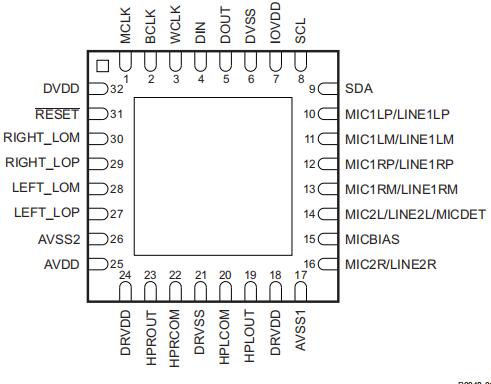
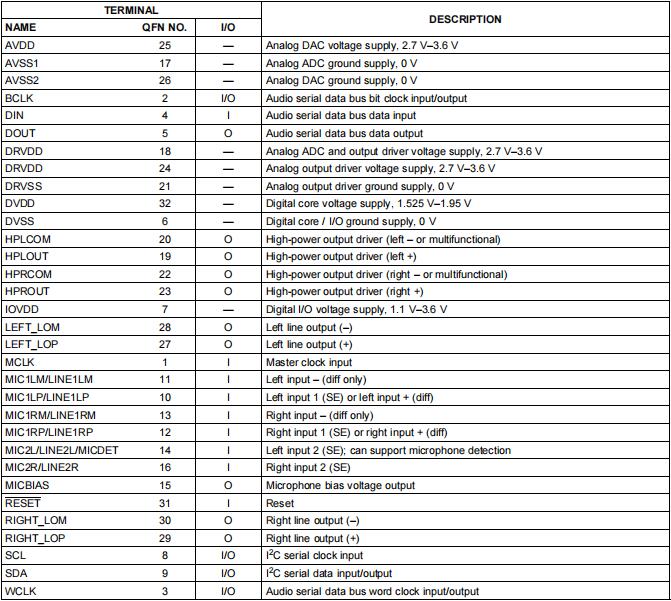
TLV320AIC3104IRHBR Dimensions
| Height | 1mm |
| Length | 5mm |
| Thickness | 900μm |
| Width | 5mm |
TLV320AIC3104IRHBR Package
TLV320AIC3104IRHBR Alternatives
Trend Analysis
Datasheet PDF
- PCN Design/Specification :
Parts with Similar Specs
What’s TLV320AIC3104IRHBR?
The TLV320AIC3104IRHBRis a highly flexible, low-power, stereo audio codec with extensive feature integration, intended for applications in smartphones, PDAs, and portable computing, communication, and entertainment.
How many pins does TLV320AIC3104IRHBR have?
32
Where is TLV320AIC3104IRHBR made by?
TLV320AIC3104IRHBR is from an American company-Texas Instruments Incorporated.
Can TLV320AIC3104IRHBR be operated in 100℃?
No, its operating temperature is between -40 and 85℃.
What’s the main parameter of TLV320AIC3104IRHBR?
The main parameters of this part are Low-Power Stereo CODEC with 6 Inputs, 6 Outputs, HP Amp, and Enhanced Digital Effects 32-VQFN -40 to 85.
![ATMEGA32 AVR Microcontroller: Pins, Datasheet and Using Atmega32 with Arduino IDE [VIDEO]](https://res.utmel.com/Images/Article/f0b5cd37-f149-4353-abe3-2ebd354bab5c.jpg) ATMEGA32 AVR Microcontroller: Pins, Datasheet and Using Atmega32 with Arduino IDE [VIDEO]
ATMEGA32 AVR Microcontroller: Pins, Datasheet and Using Atmega32 with Arduino IDE [VIDEO]09 December 20214396
 10M02SCU169C8G: Key advantages, Datasheet, Features and Configuration
10M02SCU169C8G: Key advantages, Datasheet, Features and Configuration07 January 2022841
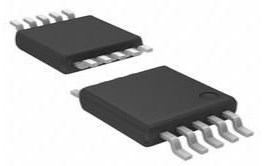 MAX3311 Transceiver: Pinout, Equivalent and Datasheet
MAX3311 Transceiver: Pinout, Equivalent and Datasheet21 January 2022548
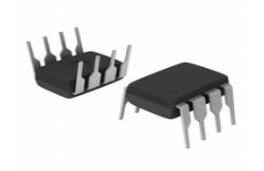 MCP602 Op-amp: Pinout, Datasheet and Test Circuit
MCP602 Op-amp: Pinout, Datasheet and Test Circuit11 November 20216501
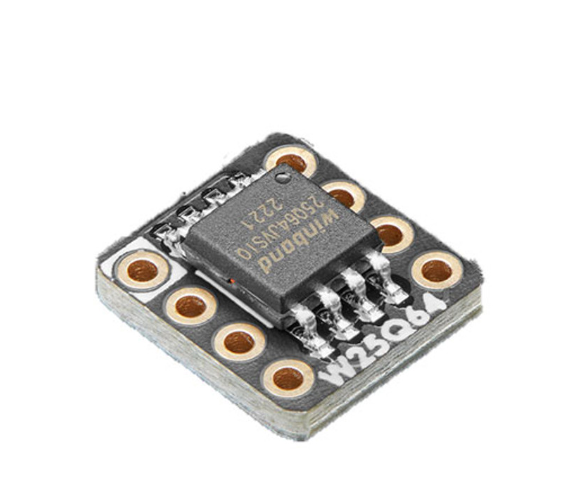 W25Q64JVSSIQ: Overview, Features, and Datasheet
W25Q64JVSSIQ: Overview, Features, and Datasheet25 October 20232611
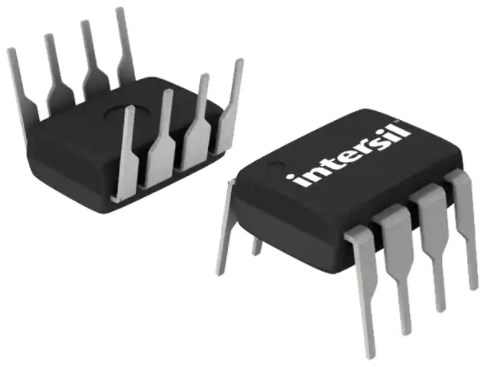 ICM7555IPAZ General Purpose Timers: Diagram, Pinout, and Datasheet
ICM7555IPAZ General Purpose Timers: Diagram, Pinout, and Datasheet15 February 20222050
 2SA1943 PNP Transistor: Datasheet, Price and Equivalent
2SA1943 PNP Transistor: Datasheet, Price and Equivalent15 October 202116787
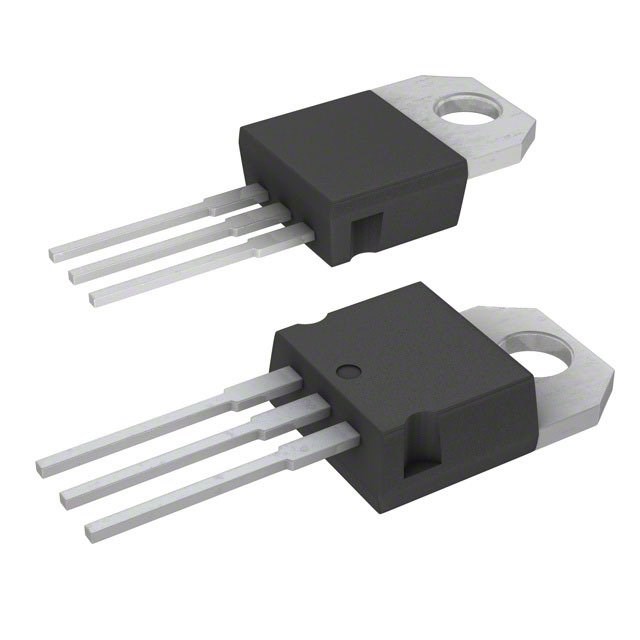 IRF540 N-Channel MOSFET: Circuit, Datasheet, and Pinout
IRF540 N-Channel MOSFET: Circuit, Datasheet, and Pinout06 August 202114542
 Schottky Diodes: Principle, Functions, and Applications
Schottky Diodes: Principle, Functions, and Applications21 October 202524788
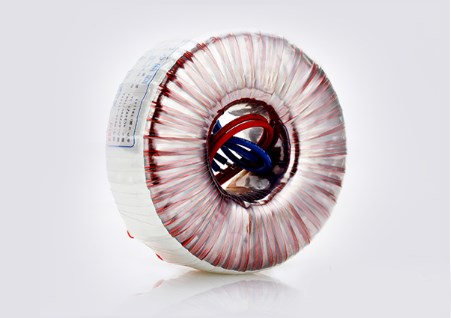 Toroidal transformer: Principles, Features, Types and Applications
Toroidal transformer: Principles, Features, Types and Applications13 November 20207087
 Introduction to Synchronous Counter and Asynchronous Counter
Introduction to Synchronous Counter and Asynchronous Counter31 March 202514799
 Tunnel Diode: Definition, Features and Tunneling Process
Tunnel Diode: Definition, Features and Tunneling Process25 August 20209462
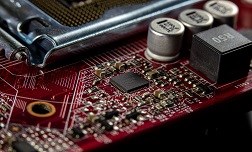 Application Specific Trade-offs for WBG SIC, GaN and High End SI Power Switch Technologies
Application Specific Trade-offs for WBG SIC, GaN and High End SI Power Switch Technologies22 November 20221443
 Exploring the Cyber Physical System of Electric Vehicles
Exploring the Cyber Physical System of Electric Vehicles25 March 20242447
 Manifold Absolute Pressure (MAP) Sensor: Working Principles, Structure, and Types
Manifold Absolute Pressure (MAP) Sensor: Working Principles, Structure, and Types31 March 202543644
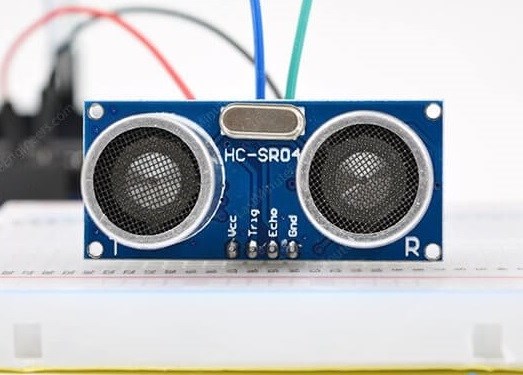 All You Need to Know about Ultrasonic Sensors
All You Need to Know about Ultrasonic Sensors25 October 202510028
Texas Instruments
In Stock: 30000
United States
China
Canada
Japan
Russia
Germany
United Kingdom
Singapore
Italy
Hong Kong(China)
Taiwan(China)
France
Korea
Mexico
Netherlands
Malaysia
Austria
Spain
Switzerland
Poland
Thailand
Vietnam
India
United Arab Emirates
Afghanistan
Åland Islands
Albania
Algeria
American Samoa
Andorra
Angola
Anguilla
Antigua & Barbuda
Argentina
Armenia
Aruba
Australia
Azerbaijan
Bahamas
Bahrain
Bangladesh
Barbados
Belarus
Belgium
Belize
Benin
Bermuda
Bhutan
Bolivia
Bonaire, Sint Eustatius and Saba
Bosnia & Herzegovina
Botswana
Brazil
British Indian Ocean Territory
British Virgin Islands
Brunei
Bulgaria
Burkina Faso
Burundi
Cabo Verde
Cambodia
Cameroon
Cayman Islands
Central African Republic
Chad
Chile
Christmas Island
Cocos (Keeling) Islands
Colombia
Comoros
Congo
Congo (DRC)
Cook Islands
Costa Rica
Côte d’Ivoire
Croatia
Cuba
Curaçao
Cyprus
Czechia
Denmark
Djibouti
Dominica
Dominican Republic
Ecuador
Egypt
El Salvador
Equatorial Guinea
Eritrea
Estonia
Eswatini
Ethiopia
Falkland Islands
Faroe Islands
Fiji
Finland
French Guiana
French Polynesia
Gabon
Gambia
Georgia
Ghana
Gibraltar
Greece
Greenland
Grenada
Guadeloupe
Guam
Guatemala
Guernsey
Guinea
Guinea-Bissau
Guyana
Haiti
Honduras
Hungary
Iceland
Indonesia
Iran
Iraq
Ireland
Isle of Man
Israel
Jamaica
Jersey
Jordan
Kazakhstan
Kenya
Kiribati
Kosovo
Kuwait
Kyrgyzstan
Laos
Latvia
Lebanon
Lesotho
Liberia
Libya
Liechtenstein
Lithuania
Luxembourg
Macao(China)
Madagascar
Malawi
Maldives
Mali
Malta
Marshall Islands
Martinique
Mauritania
Mauritius
Mayotte
Micronesia
Moldova
Monaco
Mongolia
Montenegro
Montserrat
Morocco
Mozambique
Myanmar
Namibia
Nauru
Nepal
New Caledonia
New Zealand
Nicaragua
Niger
Nigeria
Niue
Norfolk Island
North Korea
North Macedonia
Northern Mariana Islands
Norway
Oman
Pakistan
Palau
Palestinian Authority
Panama
Papua New Guinea
Paraguay
Peru
Philippines
Pitcairn Islands
Portugal
Puerto Rico
Qatar
Réunion
Romania
Rwanda
Samoa
San Marino
São Tomé & Príncipe
Saudi Arabia
Senegal
Serbia
Seychelles
Sierra Leone
Sint Maarten
Slovakia
Slovenia
Solomon Islands
Somalia
South Africa
South Sudan
Sri Lanka
St Helena, Ascension, Tristan da Cunha
St. Barthélemy
St. Kitts & Nevis
St. Lucia
St. Martin
St. Pierre & Miquelon
St. Vincent & Grenadines
Sudan
Suriname
Svalbard & Jan Mayen
Sweden
Syria
Tajikistan
Tanzania
Timor-Leste
Togo
Tokelau
Tonga
Trinidad & Tobago
Tunisia
Turkey
Turkmenistan
Turks & Caicos Islands
Tuvalu
U.S. Outlying Islands
U.S. Virgin Islands
Uganda
Ukraine
Uruguay
Uzbekistan
Vanuatu
Vatican City
Venezuela
Wallis & Futuna
Yemen
Zambia
Zimbabwe







